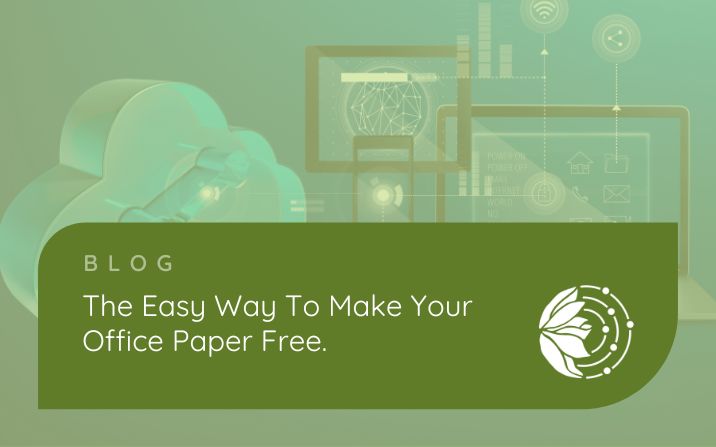Did you know that the average office worker uses 10,000 sheets of paper every year?
That’s approximately 20 reams of paper per year, and of those 10,000 sheets? 6,800 are considered waste, due to incorrect printing, duplicates and simply forgetting you’d already pressed ‘print’.
That’s a lot of paper!
According to Envirowaste, this waste is costing UK businesses at least £15bn per year. It’s not without environmental impact too, as some 80.6m tonnes of office paper enters the waste stream every year – that’s 24% of total UK waste.
Having a paperless office helps the environment and your productivity
While you think this might not apply to you as a small business owner, there are other benefits for going paperless in your office, like better data security, improved compliance with GDPR, and easier communication with clients.
So, here are my top tips for running a paperless business.
Have a great digital filing system in place
Still have a filing cabinet in your office?
It wasn’t so long ago that the filing cabinet was crucial to business success, housing files on clients, accounts, suppliers, and anything else on paper.
These days the filing cabinet has been replaced by computer-based systems, particularly those hosted on ‘the Cloud’. One reason for many business owners not wanting to move to computer hosted files was that you needed to be in front of the computer to access them (though the same can be said for filing cabinets too, really).
Thanks to the cloud, files can be accessed anywhere, at any time and on any internet-enabled device. Security has been tightened making it safer to use than ever, but there are a few considerations to bear in mind:
- only save what you need – if there isn’t a valid reason for storing it, don’t
- remember the filing cabinet principles – one folder per client is best for keeping things organised well (you can always have sub-folders if needed)
- make sure sensitive data is safely encrypted, and can only be accessed by those that need it
- be confident in the customer management systems you’re using – functionality is important
Scanning with your smartphone is a great way to save time and paper
One of the benefits of a paperless office is that it reduces clutter.
Receipts, promotional mailings, letters and business cards can all contribute to that growing pile of paper on your desk, but smartphone apps that scan and save to the Cloud are a great way of clearing that clutter.
For anything you need to keep hold of, like receipts and invoices, most apps will allow you to scan directly into the software you need them for, like QuickBooks, for example. Though saving into a secure folder on the Cloud makes it easy for anyone else that needs access.
For business cards and letters that you want to save for future reference, scanning can be a quick way to store them ready for access when needed.
For everything else – consider whether it really needs saving or not.
If it does, taking a photo can be a great alternative to scanning, particularly if it’s something you want to save for inspiration.
If not, take it straight to the recycling bin.
Use your phone or tablet to take notes
Rather than taking your trusty notebook to a client meeting, why not take notes on your phone or tablet instead?
Some apps will let you use a stylus to write directly on the screen if you still prefer to handwrite, or you can attach a keyboard to your tablet to speed things up. Once you’re back in the office, those notes can be converted into a pdf or word document for you to change or add things as needed.
And if your client meeting is to sign contracts, why not switch to an electronic contract instead? Dropbox Sign and DocuSign are great apps that allow everything to be managed via email, saving you time as well as paper.
Use apps for time management
Still using pen and paper to make to-do lists?
You’re not alone, but is this really the best way to manage your time?
Online time management and productivity apps are a great way to make to-do lists, manage your schedule and even collaborate with your associates and clients. Trello is popular for creating lists, plans and even managing projects.
I hope you’ve found my tips useful. Changing to a paperless office doesn’t have to be a mammoth task and can save you time, money and improve your productivity in the long run, so why not get started today?
Do get in touch if you have any more tips or stories about how going paperless in your office benefited your business.

